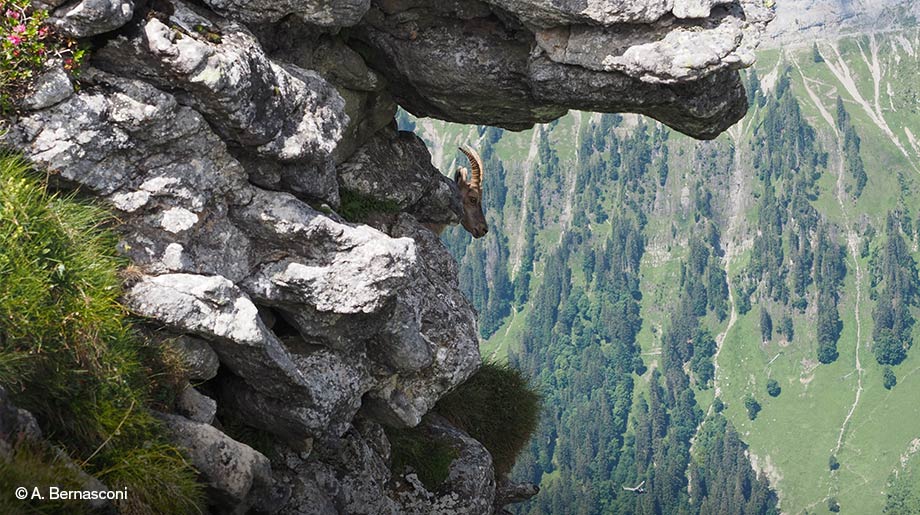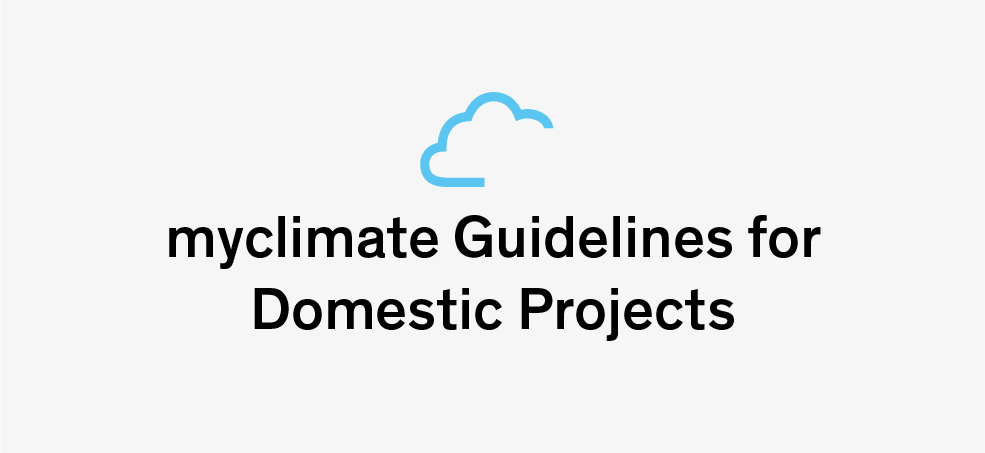Beatenberg-Habkern Natural Forest Reserve in the Canton of Bern

Project type: Land Use and Forestry
Project location: Switzerland
Project status: In operation, credits available
Annual emission reduction of the whole project: 3 407 t CO2e
The forest climate protection project in the region of Beatenberg-Habkern, Switzerland, supports the implementation and monitoring of a natural forest reserve. Thanks to the complete abandonment of the use of wood, the forest can develop undisturbed, absorb more CO2 from the atmosphere and provide a quiet, undisturbed habitat for many animal and plant species. In addition, forests help to filter pollutants from the air and soil and thus contribute to more clean water.
Forests are priceless ecosystems. They are an essential component in the fight against climate change, as they capture the greenhouse gas carbon dioxide (CO2) and generate oxygen and store carbon at the same time. Forests also serve as recreation areas for people, provide habitats for many rare and endangered animals and plant species, act as a water store and produce wood – an important renewable building material.
Industrialised nations are aiming to adapt the forestry industry in response to climate change and to promote biodiversity. This happens through adapted management, on the one hand, whereby the use of wood in the forest is reduced through specific silvicultural measures. On the other hand, it is also possible to establish a natural forest reserve where utilisation is abandoned completely. The project in the Beatenberg-Habkern region pursues the second approach.
Natural Forest Reserve Facilitates Carbon Storage
This climate protection project encompasses an area of around 592 hectares of forest in the Beatenberg-Habkern region. So far, the forest has been used for a variety of purposes, but the implementation of the project guarantees that use of the area for forestry will be abandoned. That means the amount of wood in the forest will build up and habitats for rare and endangered animal and plant species will be preserved or improved or can develop anew.
As a result of the previous forest management and use of wood, the wood reserves amount to around 244 cubic metres per hectare, which means that the forest is unable to fully reach its potential as a carbon sink. In future, full abandonment of timber utilisation should help to create a forest with wood reserves of 488 cubic metres per hectare. That means the project will lead to a doubling of the wood reserves over the same area.
The income from the sale of CO2 emission reduction certificates compensates for the lost revenue from timber utilisation and is invested in measures to promote biodiversity and the cultural landscape. For sustainable, climate-adaptive forest management and the promotion of regeneration with climate-adapted tree species, alpine pastures are cleared of bushes and kept open and fir and sycamore maples are planted and protected from game browsing.
This carbon sink function – that is the storage of carbon in the forest’s biomass (trunks and branches) and in the soil – is also described as a nature-based solution, meaning the use of a natural process as a solution to counter global warming. This carbon dioxide removal is an important process in reaching the negative emissions that are urgently needed to achieve the Paris climate goals.
Since the Confederation credits itself with part of the sink effect of Swiss forests to the national carbon footprint, each CO₂ certificate of this project is additionally backed by a certificate of a forest project benefiting smallholder families in order to avoid any double counting by the state.
Forest Reserve Secures Habitat for Black Grouse and Three-toed Woodpecker
In addition to the positive impact on the climate, the project also has an influence on the biodiversity of the flora and fauna. The complete abandonment of utilisation means habitats are preserved and promoted, and the species have a safe heaven in which to grow and to reproduce. The more densely overgrown forest sections and the deadwood left behind create important habitats that animals lack in managed forests.
The indicator species of this forest reserve are capercaillie, black grouse, hazel grouse and the three-toed woodpecker. An indicator species is an animal or plant species that is characteristic of a certain habitat and which reacts especially sensitively to changes in the environment because of its particular requirements. Where indicator species are found, there are also good conditions for numerous other species found within the same habitat. Consequently, protective measures like this forest reserve not only help the indicator species, but also entire communities of animal and plant species.
This project contributes to 2 SDGs (as of end 2024):
Find out how myclimate reports these SDGs in our FAQ.
These SDGs have been approved by myclimate:
The increase in wood reserves should capture an average of up to 3 407 tonnes of CO₂ from the atmosphere annually. Over the 50-year total duration of the project, this equates to an emissions reduction of up to 170 345 tonnes of CO₂.
With the complete abandonment of forestry utilisation and the establishment of a natural forest reserve on 592 hectares, the project offers an undisturbed habitat for countless animal and plant species.
Situation without project
Less carbon accumulation in the forest, lower biodiversityProject standard

Partner

Project number
7834









